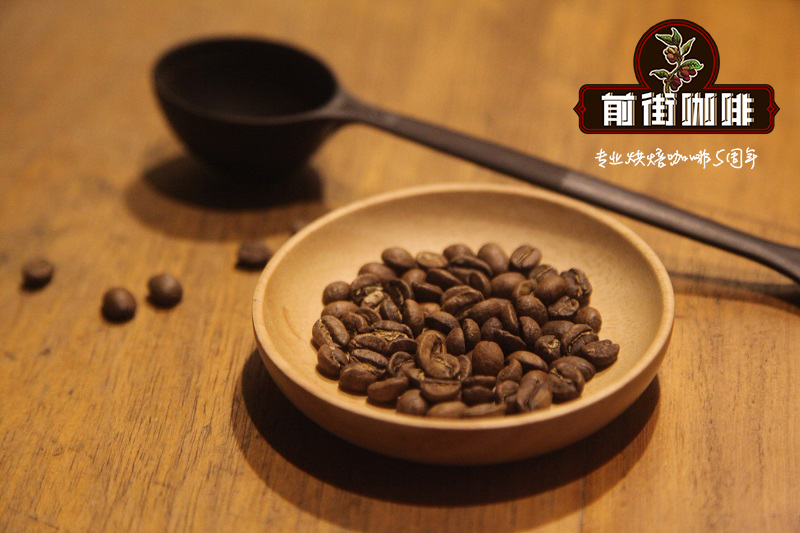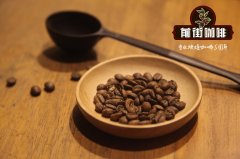Ethiopia washing Yegashefi G1 washing treatment Xinlinu story behind the small farmers

Professional coffee knowledge exchange more coffee bean information please follow the coffee workshop (Wechat official account cafe_style)
Qianjie-Yejia Xuefei Water washing G1 Xinlinu Xiaonong introduction
YCFCU Cooperative, introduced as follows:
For small farmers in YCFCU, the process of harvesting and transporting the processed coffee is particularly arduous. First, beans must be initially screened after they are harvested in their own small farm, and then concentrated at the receiving station set up by the village cooperative. After recording and weighing, they are transported to the nearby small water treatment station, where, after cleaning, the peel and pulp are removed, then washed again, fermented for about 36 hours, and then washed again. During the process of natural sun drying, members of the cooperative cooperate closely and the whole family is required to mobilize during the harvest period. Since the average small farmer has only 0.5 hectares of land, the harvest is small. Other farming or farming is also required in order to survive, but coffee may be their rare source of [cash income], which shows the importance of coffee income to these farmers.
This kind of small farmer planting mode is quite common in Ethiopia, belonging to [Garden plant], which is a garden planting method, which looks like it is planted in one's own courtyard! After being sent to the receiving station to screen out the bad beans, the quantity will be recorded and then sent to the washing station for further treatment. all the way, the beans will be dried to the specified moisture content, and then sent to the dry treatment plant of YCFCU. Then the hard shell is removed and graded in YCFCU, which has to be determined by the cooperative quality controller. At present, YC has a dedicated quality controller stationed in this area, production area cooperative and look at the harvest treatment. And finally concentrated in the cooperative area warehousing and shipped to the capital for testing and waiting for graded shelling and final screening and export!
YCFCU bags are occasionally marked with hand picked, which means hand-picked and hand-selected. according to YCFCU, these coffees are picked by small farmers and sent to cooperative processing plants after a series of careful treatment. After sheepskin is removed, cooperative women work hard to select only high-quality raw beans to bag and export. Different from the employees of a large coffee shop or a deed manor. On the other hand, it is also to let overseas buyers know that they rely almost entirely on manual selection!
Wash Yega Xuefei G1 Xinlinu small farmers
Producing area: Yega Xuefei
Altitude: 1800-2000m
Variety: native species
Treatment washing
Flavor: obvious aroma of jasmine, rich fruit aroma, citric acid, delicate and elegant sweet and sour feeling.
In short: Qianjie is a coffee research hall, happy to share the knowledge about coffee with you, we share unreservedly just to make more friends fall in love with coffee, and there will be three low-discount coffee activities every month. The reason is that Qianjie wants to make more friends drink the best coffee at the lowest price, which has been Qianjie's tenet for 6 years!
END
Important Notice :
前街咖啡 FrontStreet Coffee has moved to new addredd:
FrontStreet Coffee Address: 315,Donghua East Road,GuangZhou
Tel:020 38364473
- Prev

What are the flavor and taste characteristics of Ethiopian coffee beans? introduction to the varieties of Ethiopian Coffee from Sidamo
Professional coffee knowledge exchange more coffee bean information please follow the coffee workshop (Wechat official account cafe_style) front street-Ethiopian coffee introduction in the 6th century, people in Ethiopia began to chew coffee beans and spices together, the most common is hunters wrapped coffee in bacon
- Next

What is png coffee bean Papua New Guinea png coffee bean flavor characteristics
Professional coffee knowledge exchange more coffee bean information please follow the coffee workshop (Wechat official account cafe_style) front street-Papua New Guinea PNG Coffee introduction Papua New Guinea many people think of Papua New Guinea (hereinafter referred to as PNG) coffee must think it will be similar to Indonesian coffee, but in fact they are completely different. When PNG's coffee was grown,
Related
- Beginners will see the "Coffee pull flower" guide!
- What is the difference between ice blog purified milk and ordinary milk coffee?
- Why is the Philippines the largest producer of crops in Liberia?
- For coffee extraction, should the fine powder be retained?
- How does extracted espresso fill pressed powder? How much strength does it take to press the powder?
- How to make jasmine cold extract coffee? Is the jasmine + latte good?
- Will this little toy really make the coffee taste better? How does Lily Drip affect coffee extraction?
- Will the action of slapping the filter cup also affect coffee extraction?
- What's the difference between powder-to-water ratio and powder-to-liquid ratio?
- What is the Ethiopian local species? What does it have to do with Heirloom native species?

